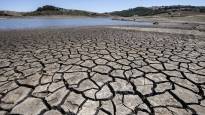Wide cracks have appeared in the ground in the southwestern parts of the United States. The reason is extensive groundwater pumping.
Groundwater is one of the most important sources of fresh water on Earth. It provides almost half of the drinking water and about 40 percent of the irrigation water.
In the United States, groundwater is already being pumped into use at too high a rate, which means that the Earth does not have time to naturally replenish its reserves, says the researcher of cracks in the earth Joseph Cook From the Arizona Geological Survey For Business Insider.
When the ground water reserves are depleted, the ground water no longer supports the ground, but it sinks and collapses, creating cracks in the ground. Deep cracks can damage homes, roads, canals and dams and threaten livestock and human life, for example.
Cracks, the longest of which is up to 270 kilometers, are located in the states of Arizona, Utah and California.
Long cracks cannot be filled in a short period of time, but on the contrary, they can continue to grow in length and width.
The New York Times describes the phenomenon into a national crisis.
There may be a shortage of drinking water
Groundwater has decreased significantly in the United States over the past 40 years. According to The New York Times, groundwater reserves take hundreds or even thousands of years to recover, if at all.
According to the magazine, a large part of the pumped groundwater is thousands of years old. There may be a shortage of drinking water in some places within ten years.
According to the UN estimate 2.3 billion people live in countries that suffer from some degree of water scarcity. In 2020, two billion people suffered from a lack of drinking water and 3.6 billion did not have a toilet at home. 2.3 billion did not have opportunities to wash their hands at home, leading to the spread of disease.
Drought and problems caused by excessive water consumption are plaguing western states in the United States, such as Arizona, where excessive water use is already affecting housing construction. According to a state forecast, the ground water resources of the city of Phoenix are threatened with a deficit of six billion cubic meters over the next hundred years.
Climate change is drying up water reserves even more. With the climate crisis and the reduction of natural water flows, we have to rely more and more on the use of groundwater, especially in agriculture.
Although climate change has been warned for a long time and countries have been urged to prepare for its effects, agriculture is still suffering.
In some places, the groundwater has been depleted so badly that efforts are being made to remedy the situation by filling the groundwater aquifer with expensively treated wastewater.
If water is drilled too much and ever deeper, arsenic, a naturally occurring toxic heavy metal in the environment, can also cause problems.
In the worst case, arsenic can end up in drinking water when aquifers, i.e. groundwater formations, are depleted.
In the graphic below, you can see how groundwater is formed in the different spaces between the soil layers.
There is little regulation of groundwater use throughout the country, which prevents finding a solution to the problem. According to The New York Times, regulation varies between states and is generally lax.
Over-pumping of groundwater and oil in the Houston area of Texas has caused ground subsidence of more than three meters over the decades.
In addition to the United States, increasingly worse and more frequent droughts are also affecting several other regions on Earth. In the early summer of 2023, the amount of groundwater dropped to an alarmingly low level in parts of southern Europe, when some farmers said they lost 80 percent of their crops.
The solution is funding to fill groundwater
As a counterbalance to dry summers, wet winters and snowmelt in snow-covered mountain areas can provide relief for drought-stricken California. in Sacramento The strong currents of the Sacramento River is used to store water. The river flows have been used since 2014.
Investments from the states and the federal government are hoped for as a solution to groundwater replenishment and storage
What thoughts does the article evoke? You can discuss the topic until Monday at 11 p.m.
